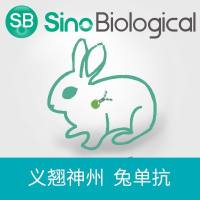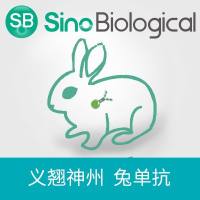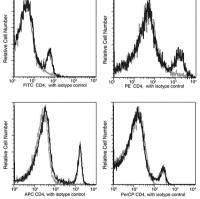Most T lymphocytes of the immune system differentiate within the thymus along the CD4/CD8 developmental pathway by a highly ordered process termed thymic selection (
1
,
2
). The maturation status of thymocytes is commonly assessed by their expression of the coreceptor proteins CD4 and CD8 and their surface density of aβ T cell receptors (αβ TCR), (
1
). Three major subpopulations of T cells exist within the thymus that exemplify the progression of thymocytes along the CD4/CD8 developmental pathway:
| 1. |
CD4
−
CD8
−
(double-negative) thymocytes which express no αβ TCR;
|
| 2. |
CD4
+
CD8
+
(double-positive) thymocytes, which express no/low αβ TCR; and
|
| 3. |
CD4
+
CD8
−
and CD4
−
CD8
+
(single positive) thymocytes, both of which express high surface density of αβ TCR (
1
–
4
), (Fig. 1 ).
|
Fig. 1.
Intrathymic development of thymocytes along the CD4/CD8 developmental pathway. Immature CD4
−
CD8
−
thymocytes develop into progeny CD4
+
CD8
+
thymocytes which maintain low expression of αβTCR. Immature CD4
+
CD8
+
thymocytes expressing αβTCR of appropriate specificities are selected for further differentiation into mature T cells that express either CD4 (CD4
+
CD8
−
) or CD8 (CD4
−
CD8
+
) coreceptor molecules, but not both. Mature CD4
+
CD8
−
and CD4
−
CD8
+
thymocytes emigrate from the thymus to the periphery where they may localize in lymphoid organs (for example, lymph node or spleen).









